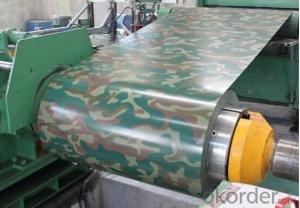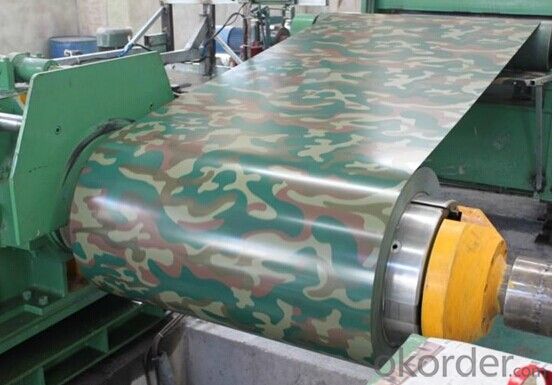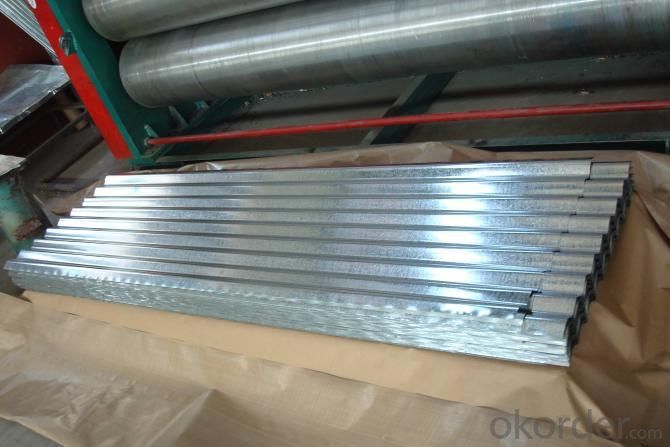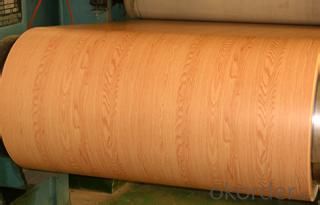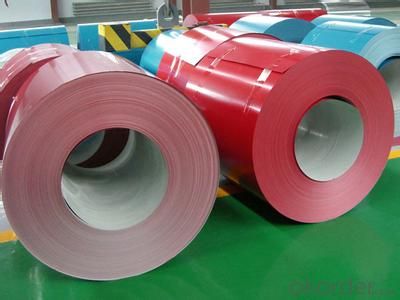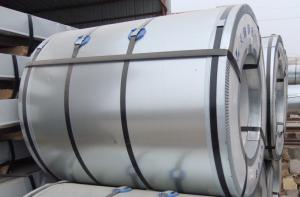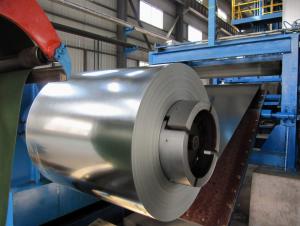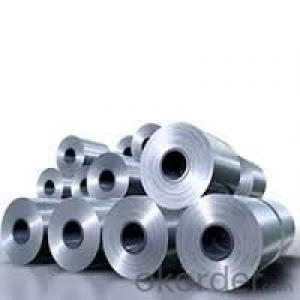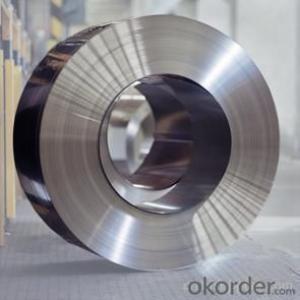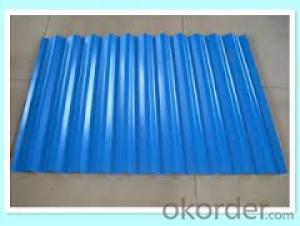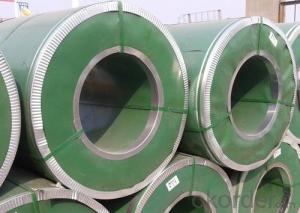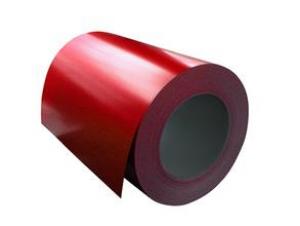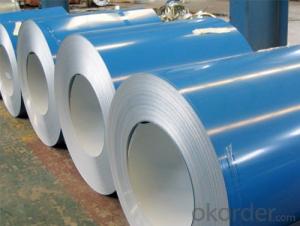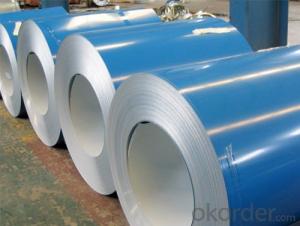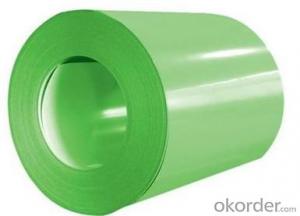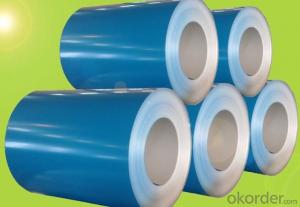Pre-Painted Galvanized/Aluzinc Steel Coil-Hot Selling
- Loading Port:
- China main port
- Payment Terms:
- TT OR LC
- Min Order Qty:
- 50 m.t.
- Supply Capability:
- 10000 m.t./month
OKorder Service Pledge
OKorder Financial Service
You Might Also Like
1. Pre-Painted Galvanized/Aluzinc Steel Coil Description:
With GI as base material, after pretreatment (degrease and chemical treatment ) and liquid dope with several layers of color, then after firing and cooling, finally the plate steel is called pre-painted galvanized (aluzinc) steel. Pre-painted galvanized steel is good capable of decoration, molding, corrosion resistance. It generally displays superior workability, durability and weather resistance.
2.Main Features of the Pre-Painted Galvanized/Aluzinc Steel Coil:
• Excellent process capability
• Smooth and flat surface
• Workability, durability
• Excellent heat resistance performance
• High strength
• Good formability
• Good visual effect
3.Pre-Painted Galvanized/Aluzinc Steel Coil Images
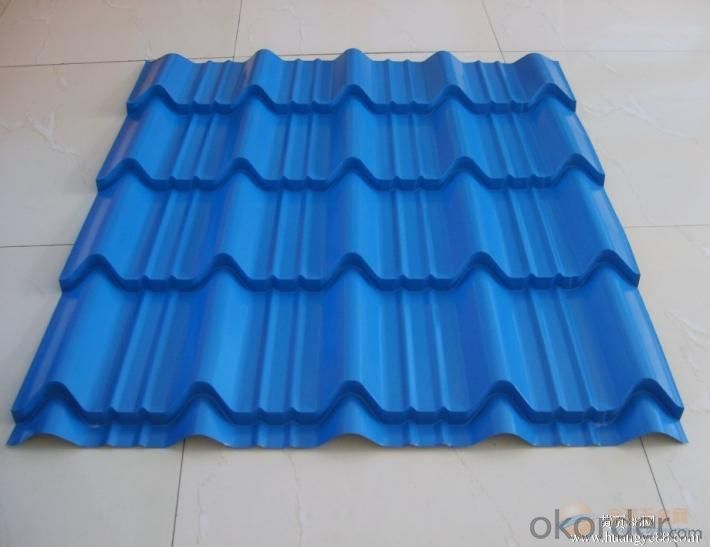
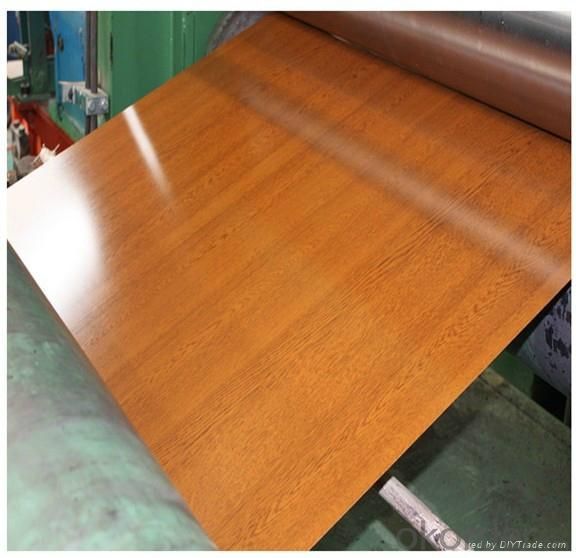
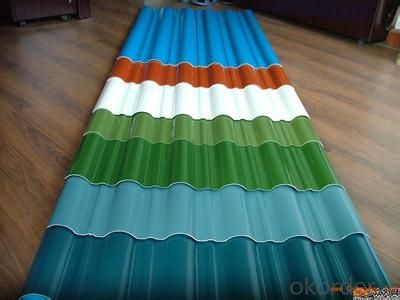
4.Pre-Painted Galvanized/Aluzinc Steel Coil Specification
Standard: AISI, ASTM, BS, DIN, GB, JIS
Grade: DX51D, DX52D
Thickness: 0.17-2.0mm
Brand Name: KMRLON
Model Number: coil
Type: Steel Coil
Technique: Cold Rolled
Surface Treatment: Coated
Application: Boiler Plate
Special Use: High-strength Steel Plate
Width: 20-1250mm
Length: customized
commoidty: pre-painted galvanized steel coil
Thickness: 0.13-4.0mm
width: 20-1250mm
zinc coating: 40-180g/m2
printing thickness: top side: 20+/-5 microns, back side: 5-7 microns
color: all RAL color
surface treatment: color coated
coil weight: 4-7 tons
coil ID: 508/610mm
packaging: standard seaworthy packing
5.FAQ of Pre-Painted Galvanized/Aluzinc Steel Coil
1. What’s the application of this product?
Roof, roof structure, surface sheet of balcony, frame of window, etc.
2. What’s the brand of the paint?
We use the best brand of all of the word—AKZO.
3. How to guarantee the quality of the products?
We have established the international advanced quality management system,every link from raw material to final product we have strict quality test;We resolutely put an end to unqualified products flowing into the market. At the same time, we will provide necessary follow-up service assurance.
4. How long can we receive the product after purchase?
Usually within thirty working days after receiving buyer’s advance payment or LC. We will arrange the factory manufacturing as soon as possible. The cargo readiness usually takes 15-25 days, but the shipment will depend on the vessel situation.
- Q: Which steels were origianally designed to be used to cut and shape metals and other materials?- alloy steel- high carbon steel- carbide steel- tool steelthanks
- Tool steels These were designed to be used as hardenable, dimensionally stable materials for cutting of metals. The alloying elements they contain (including tungsten, vanadium, niobium and molybdenum as well as chromium)are there to produce carbides (mainly) which are stable at dull-red heat. This cannot be achieved with high carbon steels, carbide steels or (normal) alloy steels which all lose their strength and hardness at metal cutting temperatures.
- Q: 3 bedroom rambler with attached garage. A bad hail storm in May damaged my white siding and roof. I am concerned insurance adjustThanks much.er will not give me replacement value for steel siding. Any one know the cost and where to buy in Minnesota.
- In answer to you vinyl vs. steel siding. The differences are dramatic. Vinyl has the tendency to sag for two reasons; 1. Poor install, 2. Poor quality of the siding. I am a strong advocate of steel siding and seamless steel in particular. I am familiar with steel siding jobs that have been installed over 15-20 years. A high quality steel siding only needs to be rinsed or washed every few years to maintain its original look. Steel may cost more up front but it will pay back in spades for years to come.
- Q: If needed for Defence could a stainless steel sword kill someone my buddy wanted this sword for Defece after it is sharpend here is a picture
- Anything sharp can kill. The serious problem with stainless steel swords is that they're brittle, cheap and ONLY meant for display, and nothing more.
- Q: How are steel coils used in the manufacturing of construction cranes?
- Steel coils are used in the manufacturing of construction cranes to form the structural components, such as the boom, mast, and jib. These coils are processed and shaped through a series of cutting, bending, and welding techniques to create the strong and durable framework necessary for the crane's operation.
- Q: How do steel coils withstand extreme temperatures?
- The unique composition and manufacturing process of steel coils enable them to endure extreme temperatures. Steel, the primary material in coils, consists of iron and carbon, forming an alloy with exceptional thermal properties. With a high melting point of up to 2,500 degrees Fahrenheit (1,370 degrees Celsius), steel remains structurally stable even in intense heat. Additionally, the annealing process is commonly applied to steel coils. This involves heating the steel to a specific temperature and gradually cooling it down. By relieving internal stresses, annealing enhances the steel's resistance to thermal expansion and contraction. It also reduces internal defects, thereby improving the overall strength and durability of the steel, enabling it to better withstand extreme temperatures. Furthermore, protective coatings are often applied to steel coils to provide additional resistance against temperature fluctuations. These coatings, such as galvanized or zinc coatings, act as a barrier between the steel and the external environment. They effectively prevent oxidation, corrosion, and other forms of degradation that can occur when exposed to extreme heat or cold. In conclusion, the ability of steel coils to withstand extreme temperatures can be attributed to the inherent properties of steel, the annealing process that relieves internal stresses, and the protective coatings that offer an extra layer of resistance. These factors work in harmony to ensure that steel coils maintain their structural stability and performance, even in the most challenging temperature conditions.
- Q: What are the different grades of steel used for making coils?
- There are several different grades of steel that are commonly used for making coils, depending on the specific application and requirements. Some of the most commonly used grades include: 1. Low carbon steel (also known as mild steel): This grade of steel is often used for making coils as it offers good formability, weldability, and machinability. It is suitable for a wide range of applications where strength and durability are not the primary requirements. 2. High carbon steel: This grade of steel contains higher levels of carbon, which provides increased strength and hardness. It is commonly used for making coils that require high strength and resistance to wear and tear, such as springs and automotive components. 3. Stainless steel: This grade of steel contains a high percentage of chromium, which provides excellent corrosion resistance. Stainless steel coils are commonly used in applications where resistance to rust and staining is crucial, such as kitchen appliances, automotive trim, and medical equipment. 4. Galvanized steel: This grade of steel is coated with a layer of zinc, which provides excellent corrosion resistance. Galvanized steel coils are commonly used in outdoor applications where exposure to moisture and other elements is a concern, such as roofing, fencing, and HVAC ductwork. 5. Electrical steel: This grade of steel is specially designed for use in electrical applications, such as transformers, motors, and generators. It has low levels of impurities and is optimized for high magnetic permeability and low core loss. 6. Advanced high-strength steel (AHSS): This grade of steel is engineered to provide exceptional strength while maintaining good formability. AHSS coils are commonly used in the automotive industry for lightweighting vehicles while ensuring structural integrity and crashworthiness. These are just a few examples of the different grades of steel used for making coils. The specific grade chosen will depend on factors such as the intended application, desired properties, and cost considerations.
- Q: I'm trying to put together a small structure using galvanized steel electrical conduit (3/4) and I can't seem to find a T-junction conduit coupler anywhere. I'm wondering if I could weld the tubing together, but I'm not sure if I can weld galvanized steel. Also, if I can weld them, is there any special technique that I need to use outside of regular acetelene/oxygen torch and solder?
- Can You Weld Galvanized Steel
- Q: How are steel coils used in the production of automotive structures?
- Various methods involve the usage of steel coils in the production of automotive structures. To begin with, these coils serve as the primary material for manufacturing car bodies and frames. Typically composed of high-strength steel, known for its durability and crashworthiness, these coils undergo processing and forming to create different automotive components such as panels, doors, roofs, and pillars. Moreover, steel coils are also utilized in the creation of various structural components within an automobile. For instance, they contribute to the fabrication of suspension systems, chassis, and other vital parts that provide stability, strength, and support to the vehicle. Steel coils frequently find application in the production of structural beams, reinforcement bars, and other load-bearing elements that ensure the overall strength and safety of the vehicle. Furthermore, steel coils play a significant role in the manufacturing of automotive parts that require precise shaping and forming processes. These coils are fed into stamping presses, where they undergo a series of operations including cutting, bending, and shaping to produce intricate parts such as brackets. The versatility of steel enables the production of complex automotive structures with exceptional accuracy and precision. Additionally, steel coils are crucial in the production of automotive exhaust systems. Typically composed of stainless steel, which exhibits excellent resistance to corrosion and high temperatures, these coils are formed and welded into exhaust pipes, mufflers, and catalytic converters, guaranteeing the durability and longevity of these critical components. In conclusion, the utilization of steel coils is essential in the production of automotive structures. They are employed in the creation of car bodies, frames, suspension systems, chassis, and other structural components. Steel coils also play a vital role in the manufacturing of precise and intricate automotive parts, as well as exhaust systems. Overall, the presence of steel coils contributes significantly to the strength, safety, and longevity of automotive structures.
- Q: What are the dimensions of steel coils used in automotive part manufacturing?
- The dimensions of steel coils used in automotive part manufacturing can vary depending on the specific application and manufacturer. However, commonly used dimensions for steel coils in automotive part manufacturing range from 0.5 to 3 millimeters in thickness and 600 to 2000 millimeters in width. The length of the coils can also vary, typically ranging from several meters to several hundred meters. It is important to note that these dimensions are not fixed and can be customized to meet the specific requirements of each automotive part being manufactured.
- Q: I need to know the density of steel as one of my physical properties of steel. Any answers? If u have more physical or chemical properties of steel, that would help to thanks.
- Density Of Steel
Send your message to us
Pre-Painted Galvanized/Aluzinc Steel Coil-Hot Selling
- Loading Port:
- China main port
- Payment Terms:
- TT OR LC
- Min Order Qty:
- 50 m.t.
- Supply Capability:
- 10000 m.t./month
OKorder Service Pledge
OKorder Financial Service
Similar products
Hot products
Hot Searches
Related keywords
